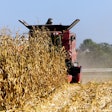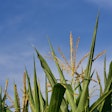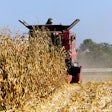
The latest U.S. Drought Monitor report, jointly produced by the National Drought Mitigation Center at the University of Nebraska-Lincoln, the United States Department of Agriculture, and the National Oceanic and Atmospheric Administration, reveals a complex picture for American agriculture as winter weather patterns bring both relief and challenges to different regions.
In the central and eastern United States, a significant winter storm system delivered widespread precipitation, leading to drought improvements in several key agricultural areas. The Ohio and Tennessee Valleys, crucial regions for corn and soybean production, saw beneficial moisture that could enhance soil conditions for the upcoming planting season. In parts of Kansas, a major wheat-producing state, heavy precipitation resulted in a one-category improvement in drought conditions, potentially benefiting winter wheat development.
The Pacific Northwest, another important wheat-growing region, experienced a favorable start to the wet season coupled with above-normal snowpack. This development has supported a decrease in drought coverage, which could translate to improved irrigation prospects for the coming growing season.
However, the news is not positive for all agricultural regions. Southern California and the Southwest continue to face worsening drought conditions. The expansion of moderate to severe drought in these areas could pose significant challenges for fruit, nut, and vegetable growers, potentially increasing irrigation needs and production costs.
In the High Plains, a key region for cattle ranching and wheat production, the situation remains mixed. While northeastern Kansas saw improvements, southwestern Nebraska experienced an expansion of abnormally dry conditions due to little to no precipitation over the past seven weeks. This dryness, combined with above-normal temperatures during late fall and early winter, could impact winter wheat development and early spring planting preparations.
The Southeast, known for its diverse agricultural production including cotton, peanuts, and various fruits, is facing increasing drought concerns. Eastern and south Georgia saw an expansion of abnormal dryness and moderate drought, which could affect crop planning and early growing conditions for the region's farmers.
Looking ahead, the Climate Prediction Center's 6-10 day outlook suggests below-normal temperatures for much of the lower 48 states, which could slow early crop development in southern regions. Precipitation forecasts vary, with elevated chances of above-normal precipitation for the Southwest, Texas, and High Plains, potentially bringing some relief to drought-stricken areas. However, below-normal precipitation is favored along the East Coast, which could exacerbate dry conditions in southeastern agricultural regions.
















